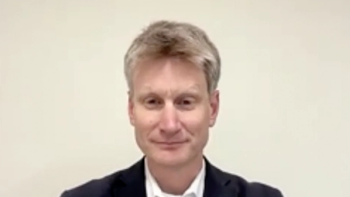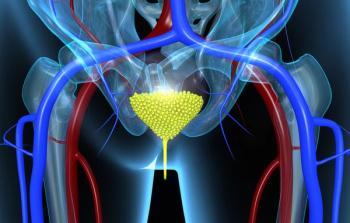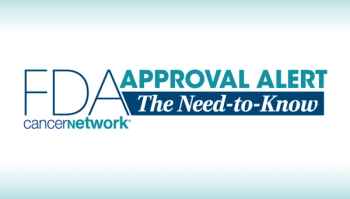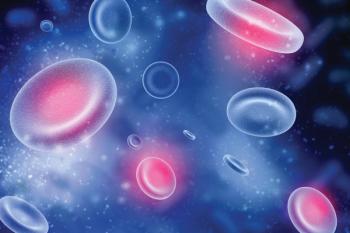
Oncology NEWS International
- Oncology NEWS International Vol 8 No 7
- Volume 8
- Issue 7
Nasal Angiogenesis Inhibitor May Stop Kaposi’s Sarcoma
ASCO-In a phase II trial, more than one-third of patients with AIDS-related Kaposi’s sarcoma responded to self-administration of a nasal solution containing the small antiangiogenic peptide IM862, Parkash Gill, MD, of the University of Southern California, reported at the ASCO annual meeting.
ASCOIn a phase II trial, more than one-third of patients with AIDS-related Kaposis sarcoma responded to self-administration of a nasal solution containing the small antiangiogenic peptide IM862, Parkash Gill, MD, of the University of Southern California, reported at the ASCO annual meeting.
These results are now being confirmed in a randomized, placebo-controlled phase III trial. IM862, which was developed by Cytran, Inc., Kirkland, Washington, is one of the first angiogenesis inhibitors to advance to phase III trials.
IM862 is a thymic dipeptide small enough to cross the nasal membrane intact. The immune-stimulating protein raises production of interleukin-12, inhibits production of vascular endothelial growth factor (VEGF), and blocks the effects of VEGF and basic fibroblast growth factor (BFGF).
The trial included 44 patients with late-stage AIDS-related Kaposis sarcoma being treated at Massachusetts General Hospital and USC. Slightly more than half of the patients had baseline CD4 T-cell counts of less than 200 cell/mm³.
The vast majority of patients had extensive diseasemore than 50 lesions at study entry or tumor-associated edema. Thirty-three patients (75%) had received prior systemic therapy, and the majority were taking protease inhibitors.
We began studies of this peptide in humans with Kaposis sarcoma because these tumors are highly vascular, Dr. Gill said. They express receptors that are otherwise expressed exclusively in endothelial cells and also express a number of markers that represent activated endo-thelium, a process that is necessary for the formation of new vessels.
Patients were randomized to be treated with IM862 in 5-mg doses on one of two dosing schedules: repeated cycle of 5 days of therapy on, then 5 days off for 90 days, or every other day until disease progression or unacceptable toxicity.
Sixteen patients (36%) achieved either a complete or partial response. Five (11%) had biopsy-proven evidence of complete resolution of lesions, Dr. Gill said. A significant proportion had stable disease14 patients had stable disease lasting longer than 6 months. Response was similar in the two arms.
Response occurred in most responders within 6 weeks of beginning therapy. The median duration of response was 33 weeks. Response was not affected by baseline CD4 count or use of protease inhibitors. The treatment was well tolerated, with no significant toxicities. Adverse effects included transient headaches, fatigue, tingling, and nausea. This dipeptide has antiangiogenic activity in preclinical models and demonstrable activity in AIDS-associated Kaposis sarcoma in human trials, he concluded.
Articles in this issue
over 26 years ago
Surgeon’s Perspective on Neoadjuvant Chemo for Breast Cancerover 26 years ago
STAR Breast Cancer Prevention Trial Begins Enrollmentover 26 years ago
Studies Suggest New Approaches in Hereditary Ovarian Cancerover 26 years ago
Lycopene Beneficial in Prostate Cancerover 26 years ago
Komen Launches REMEMBERover 26 years ago
Advice and Support for Daughters of Breast Cancer Patientsover 26 years ago
Fetus May Be Harmed by Second-Hand Smokeover 26 years ago
Genes Linked to Smoking Affinity, Smoking-Induced Lung Cancerover 26 years ago
Ultraviolet Light Slated for Review as Carcinogenover 26 years ago
NCI Funding Complementary/Alternative Medicine TrialsNewsletter
Stay up to date on recent advances in the multidisciplinary approach to cancer.






















































































